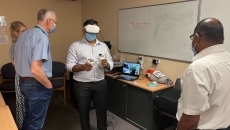Workforce
Some see the smart use of tech as a solution to the current healthcare worker shortfall. But, according to Dr Amy Compton-Phillips, it’s not quite that simple.
Some recent staffing survey results should be scary to health system leaders. A virtual nursing expert discusses the value of two emerging tele-nurse models, and how provider organizations can get started with them.
Healthcare professionals are facing unprecedented levels of stress and fatigue, which run the risk of compromising patient care. Experts at HIMSS23 Europe will explore the role of technology in alleviating the burden and boosting clinicians’ wellbeing.
Virtual care can provide more capacity in near real time for overworked clinicians, says Dr. Lyle Berkowitz, CEO of KeyCare. He advises health systems about finding the right partner to provide that support.
Andrea Fiumicelli, CEO of Dedalus, outlines how interoperability and digital healthcare tools such as AI can help control costs, reduce medication waste and prevent clinician burnout worldwide.
Common platform + standard infrastructure + unified support = reduced variability and increased predictability.
Nurse and physician informatics teams should collaborate more on data-driven workflow optimization, says Lisa Stephenson, CNIO at Houston Methodist.
New research found that experienced practice leaders most often cited visit-triage rules and telemedicine-specific staffing and scheduling protocols as two key areas most needed for telehealth implementation and maturation.
It aims to standardise medical procedures in critical care settings.
DrFirst has developed an AI-powered tool to streamline medication refill and renewal requests, meant to boost patient safety by flagging transcription mistakes. Dr. Colin Banas, the company's chief medical officer, explains.









